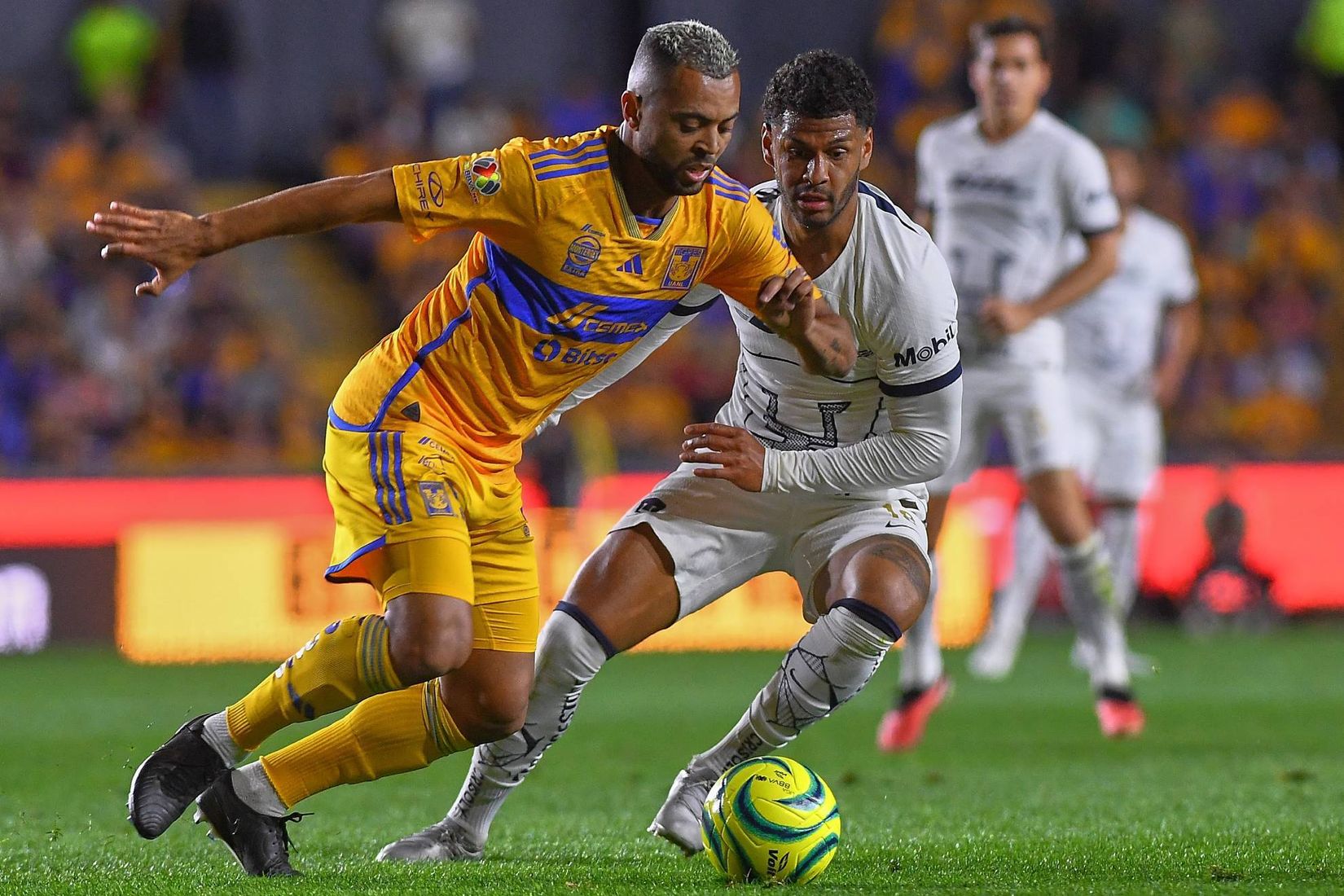
Why is the Pumas vs Tigres rivalry so intense? The rivalry between Pumas UNAM and Tigres UANL is one of the most heated in Mexican football. Both teams have rich histories, passionate fan bases, and a fierce competitive spirit. Founded in 1954, Pumas UNAM quickly rose to prominence, while Tigres UANL, established in 1933, has a long-standing tradition of success. This rivalry isn't just about football; it represents regional pride, with Pumas symbolizing Mexico City and Tigres representing Monterrey. Matches between these teams are always electrifying, filled with high stakes and unforgettable moments. Dive into the history, statistics, and cultural significance of this iconic clash.
Key Takeaways:
- Pumas UNAM and Tigres UANL have a rich history and fierce rivalry, representing regional pride and the spirit of competition in Mexican football.
- The legacy of the Pumas vs Tigres rivalry goes beyond the pitch, touching education, culture, and community involvement, making it a significant phenomenon in Mexican football.
The Origins of Pumas UNAM and Tigres UANL
The rivalry between Pumas UNAM and Tigres UANL is deeply rooted in Mexican football history. Let's explore how these two iconic teams came to be.
-
Pumas UNAM was originally named Club Deportivo Universidad in 1954 and started in the second division. By the early 1960s, they were promoted to the first division, becoming one of Mexico’s most successful clubs.
-
Tigres UANL was founded in 1933 as a team for workers of the Fundidora de Fierro y Acero (Iron and Steel Foundry) in Monterrey, Mexico. They have a long history of success, including multiple league titles and international appearances.
The Big Four of Mexican Football
Both Pumas and Tigres hold a prestigious place in Mexican football, being part of the Cuatro Grandes.
- Cuatro Grandes includes Pumas UNAM, Tigres UANL, Club America, and Chivas de Guadalajara. These teams are considered the most prestigious and have the largest followings in Mexican football.
Home Grounds: The Fortresses
The home stadiums of Pumas and Tigres are more than just venues; they are fortresses where history is made.
-
Estadio Olímpico Universitario in Mexico City is the home of Pumas UNAM. This iconic stadium hosted the 1968 Summer Olympics and has a seating capacity of over 72,000.
-
Estadio Universitario in Monterrey is where Tigres UANL plays its home games. Known for its electric atmosphere, it has a seating capacity of approximately 41,000.
Legendary Players and Coaches
Some of the greatest names in Mexican football have been associated with these teams.
-
Hugo Sanchez, one of Mexico’s greatest soccer players, started with Pumas UNAM. He debuted in the late 1970s and later played for top European clubs like Atletico Madrid and Real Madrid.
-
Sanchez’s Coaching Career saw him return to Pumas UNAM from 2000 to 2005. He also coached the Mexican National Team from 2006 to 2008, further cementing his legacy.
The Cultural and Educational Impact
The influence of these teams extends beyond football, touching education and culture.
- UNAM Campus, where Pumas UNAM is based, is one of the largest universities in Mexico. The campus was designated a World Heritage Site by UNESCO in 2007.
Women's Football
Both clubs have made significant strides in promoting women's football.
- Liga MX Femenil saw Pumas UNAM field their first female first team in 2017, marking a significant step forward for women’s football in Mexico.
Head-to-Head Statistics
The rivalry is intense, with both teams showing strong performances over the years.
-
Rivalry Statistics show that Pumas UNAM and Tigres UANL have played each other 55 times. Pumas have won 15 matches, while Tigres have won 24. They have drawn 16 times.
-
Average Goals Scored in these direct matches is 2.91 goals per game, reflecting the attacking prowess and defensive challenges both teams face.
Recent Form and Performance
Current season statistics give us a glimpse into the form of both teams.
-
Recent Form shows Pumas UNAM averaging 1.67 goals per match, while Tigres UANL averages 1.53 goals per match.
-
Home and Away Performance reveals that Pumas UNAM has seen a total of 3 goals in 100% of their home matches, with 66.67% featuring over 2.5 goals. Tigres UANL has seen over 1.5 goals in 80% of their away matches, with 20% featuring over 2.5 goals.
Recent Matches and Predictions
Recent matches and predictions add another layer of excitement to the rivalry.
-
Recent Matches saw Pumas UNAM suffer a 2-1 defeat to Atlas FC, while Tigres UANL drew 1-1 against Chivas Guadalajara.
-
Predictions and Odds for the upcoming match suggest a 41.8% chance of Pumas winning, a 33.4% chance for Tigres, and a 24.8% chance of a draw. The predicted score is 2-1 in favor of Tigres UANL.
-
Moneyline Odds are Pumas UNAM +145, Tigres UANL +185, and a draw +240, reflecting the current betting market.
-
Total Goals prediction is 2.5 goals, with odds of -118 for over and -110 for under, suggesting a high-scoring game.
Key Players and Their Impact
The performances of key players often decide the outcome of these matches.
-
Leaders and Statistics show Pumas UNAM’s top scorers include Jorge Antonio Ruvalcaba Castro with 2 goals, Cesar Huerta with 2 goals, and Ulises Rivas with 1 goal. For Tigres UANL, Andre Pierre Gignac leads with 3 goals, followed by Nicolas Ibanez with 2 goals.
-
Leaders’ Performance highlights that Jorge Antonio Ruvalcaba Castro has played 5 matches for Pumas UNAM, scoring 2 goals and assisting once. Cesar Huerta has also played 5 matches, scoring 2 goals. For Tigres UANL, Andre Pierre Gignac has played 5 matches, scoring 3 goals.
Team Rankings and Strategies
Understanding team rankings and strategies provides insight into their strengths and weaknesses.
-
Team Rankings in Liga MX show Pumas UNAM ranks 10th in goals scored and 5th in goals allowed. Tigres UANL ranks 11th in goals scored and 1st in goals allowed.
-
Shots and Opponent Shots reveal Pumas UNAM averages 59 shots per match, while Tigres UANL averages 73 shots per match. Pumas UNAM allows 41 opponent shots per match, while Tigres UANL allows 43.
Recent Streaks and Historical Significance
Streaks and historical context add depth to the rivalry.
-
Recent Streaks show Pumas UNAM has drawn three consecutive matches against Tigres UANL, indicating a level of parity.
-
Historical Representation of the rivalry sees Pumas representing Mexico City and Tigres representing Monterrey, adding regional pride to the mix.
Fan Culture and Media Coverage
The passion of the fans and extensive media coverage amplify the rivalry.
-
Fan Culture is intense, with elaborate chants, songs, and rituals that create an electric atmosphere.
-
Media Coverage ensures that matches between Pumas UNAM and Tigres UANL receive extensive national and international attention.
International Appearances and Youth Development
Both teams have made their mark internationally and focus on nurturing young talent.
-
International Appearances include Pumas UNAM participating in various continental competitions and Tigres UANL competing in the CONCACAF Champions League.
-
Youth Development programs are strong for both teams, ensuring the rivalry remains competitive with new talent emerging.
Coaching Changes and Player Transfers
Changes in coaching staff and player transfers add another layer of intrigue.
-
Coaching Changes have seen experienced coaches like Hugo Sanchez and Miguel Herrera lead the teams, bringing new strategies.
-
Player Transfers between the two teams are rare but create controversy and add tension when they occur.
Sponsorships and Stadium Atmosphere
Sponsorships and the atmosphere in the stadiums play a crucial role in the rivalry.
-
Sponsorships and Partnerships with major brands help promote the teams and the rivalry, reaching a broader audience.
-
Stadium Atmosphere at Estadio Olímpico Universitario and Estadio Universitario is electric, creating a hostile environment for the opposing team.
Ticket Sales and Social Media Impact
High ticket sales and social media engagement further highlight the rivalry's significance.
-
Ticket Sales for matches between Pumas UNAM and Tigres UANL are always high, with fans traveling in large numbers to support their teams.
-
Social Media Impact sees fans engaging in heated debates, sharing match highlights, and using hashtags to promote their team.
Community Involvement and Historical Matches
Community programs and legendary matches add to the rich history of the rivalry.
-
Community Involvement sees both teams involved in various programs that promote football and social welfare.
-
Historical Matches between Pumas UNAM and Tigres UANL have become legendary due to their significance and intensity.
Player Duels and Managerial Rivalries
Personal battles between players and managers add excitement to the matches.
-
Player Duels feature stars like Hugo Sanchez for Pumas UNAM and Andre Pierre Gignac for Tigres UANL, engaging in personal battles on the pitch.
-
Managerial Rivalries see managers with a personal stake in the outcome, leading to innovative tactics and strategic decisions.
Fan Traditions and Media Analysis
Unique fan traditions and detailed media analysis enrich the rivalry.
-
Fan Traditions include unique chants and rituals passed down through generations, adding to the cultural heritage.
-
Media Analysis dissects performances, analyzing tactics and player form to predict future outcomes.
The Legacy of the Rivalry
The rivalry between Pumas UNAM and Tigres UANL represents more than just football; it symbolizes regional pride and the spirit of competition.
- Legacy of the Rivalry is a complex phenomenon encompassing history, culture, and sportsmanship, highlighting its significance in Mexican football and beyond.
The Legacy Lives On
The rivalry between Pumas UNAM and Tigres UANL isn't just about soccer; it's a cultural phenomenon. From their storied histories to their passionate fan bases, these teams represent more than just athletic prowess. Matches between them are electric, filled with high stakes and unforgettable moments. Whether it's the iconic Estadio Olímpico Universitario or the roaring Estadio Universitario, the atmosphere is always charged. Players like Hugo Sanchez and Andre Pierre Gignac have become legends, adding to the rich tapestry of this rivalry. With each game, the legacy grows, captivating fans and creating new stories. This isn't just a match; it's a celebration of Mexican football, regional pride, and the undying spirit of competition. As long as there's soccer, the Pumas vs Tigres rivalry will continue to thrill and inspire.
Frequently Asked Questions
Was this page helpful?
Our commitment to delivering trustworthy and engaging content is at the heart of what we do. Each fact on our site is contributed by real users like you, bringing a wealth of diverse insights and information. To ensure the highest standards of accuracy and reliability, our dedicated editors meticulously review each submission. This process guarantees that the facts we share are not only fascinating but also credible. Trust in our commitment to quality and authenticity as you explore and learn with us.


